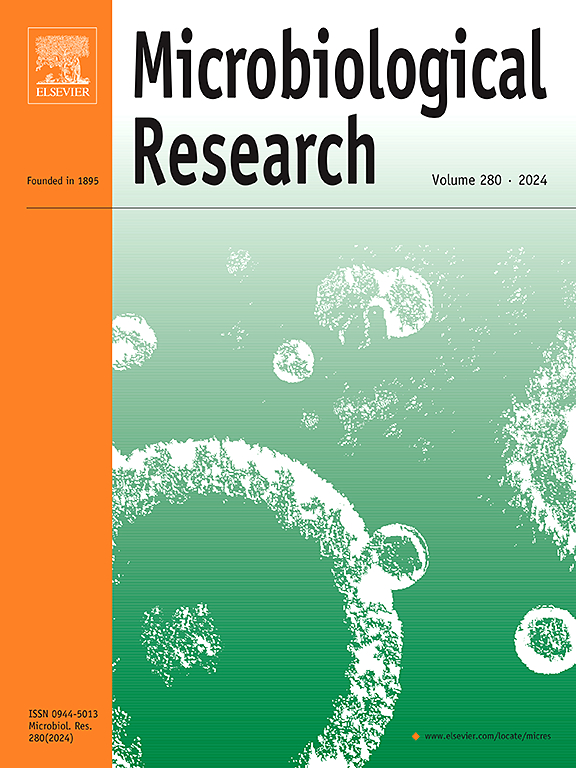Diet-driven diversity of antibiotic resistance genes in wild bats: implications for public health
IF 6.1
1区 生物学
Q1 MICROBIOLOGY
引用次数: 0
Abstract
Wild bats may serve as reservoirs for antibiotic resistance genes (ARGs) and antibiotic-resistant bacteria, potentially contributing to antibiotic resistance and pathogen transmission. However, current assessments of bats’ antibiotic resistance potential are limited to culture-dependent bacterial snapshots. In this study, we present metagenomic evidence supporting a strong association between diet, gut microbiota, and the resistome, highlighting bats as significant vectors for ARG propagation. We characterized gut microbiota, ARGs, and mobile genetic elements (MGEs) in bats with five distinct diets: frugivory, insectivory, piscivory, carnivory, and sanguivory. Our analysis revealed high levels of ARGs in bat guts, with limited potential for horizontal transfer, encompassing 1106 ARGs conferring resistance to 26 antibiotics. Multidrug-resistant and polymyxin-resistant genes were particularly prevalent among identified ARG types. The abundance and diversity of ARGs/MGEs varied significantly among bats with different dietary habits, possibly due to diet-related differences in microbial composition. Additionally, genetic linkage between high-risk ARGs and multiple MGEs was observed on the genomes of various zoonotic pathogens, indicating a potential threat to human health from wild bats. Overall, our study provides a comprehensive analysis of the resistome in wild bats and underscores the role of dietary habits in wildlife-associated public health risks.
野生蝙蝠中饮食驱动的抗生素耐药基因多样性:对公众健康的影响。
野生蝙蝠可能是抗生素耐药基因(ARGs)和抗生素耐药细菌的宿主,可能有助于抗生素耐药和病原体传播。然而,目前对蝙蝠抗生素耐药性潜力的评估仅限于培养依赖性细菌快照。在这项研究中,我们提出了宏基因组证据,支持饮食、肠道微生物群和抵抗组之间的密切联系,强调蝙蝠是ARG传播的重要载体。我们对五种不同饮食的蝙蝠的肠道微生物群、ARGs和移动遗传元件(MGEs)进行了表征:食果性、食虫性、食鱼性、食肉性和血食性。我们的分析显示,蝙蝠肠道中ARGs含量很高,水平转移的可能性有限,其中包括1106种ARGs,对26种抗生素产生耐药性。多药耐药和多粘菌素耐药基因在已确定的ARG类型中尤为普遍。在不同饮食习惯的蝙蝠中,ARGs/MGEs的丰度和多样性差异显著,这可能是由于饮食相关的微生物组成差异所致。此外,在各种人畜共患病原体的基因组上观察到高风险ARGs与多个MGEs之间的遗传联系,表明野生蝙蝠对人类健康存在潜在威胁。总的来说,我们的研究提供了对野生蝙蝠抵抗组的全面分析,并强调了饮食习惯在野生动物相关的公共卫生风险中的作用。
本文章由计算机程序翻译,如有差异,请以英文原文为准。
求助全文
约1分钟内获得全文
求助全文
来源期刊

Microbiological research
生物-微生物学
CiteScore
10.90
自引率
6.00%
发文量
249
审稿时长
29 days
期刊介绍:
Microbiological Research is devoted to publishing reports on prokaryotic and eukaryotic microorganisms such as yeasts, fungi, bacteria, archaea, and protozoa. Research on interactions between pathogenic microorganisms and their environment or hosts are also covered.
 求助内容:
求助内容: 应助结果提醒方式:
应助结果提醒方式:


